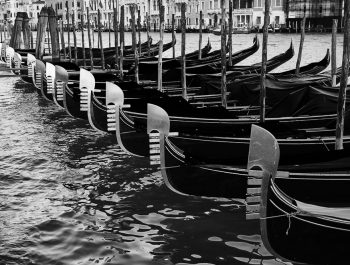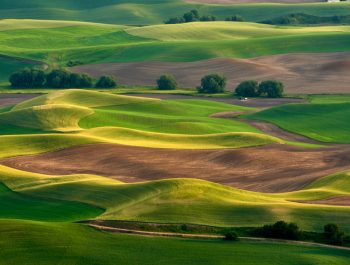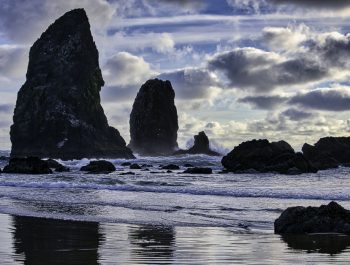Landscape Photography in Southern Namibia
How To Get The Most Out of A Self-Drive Tour
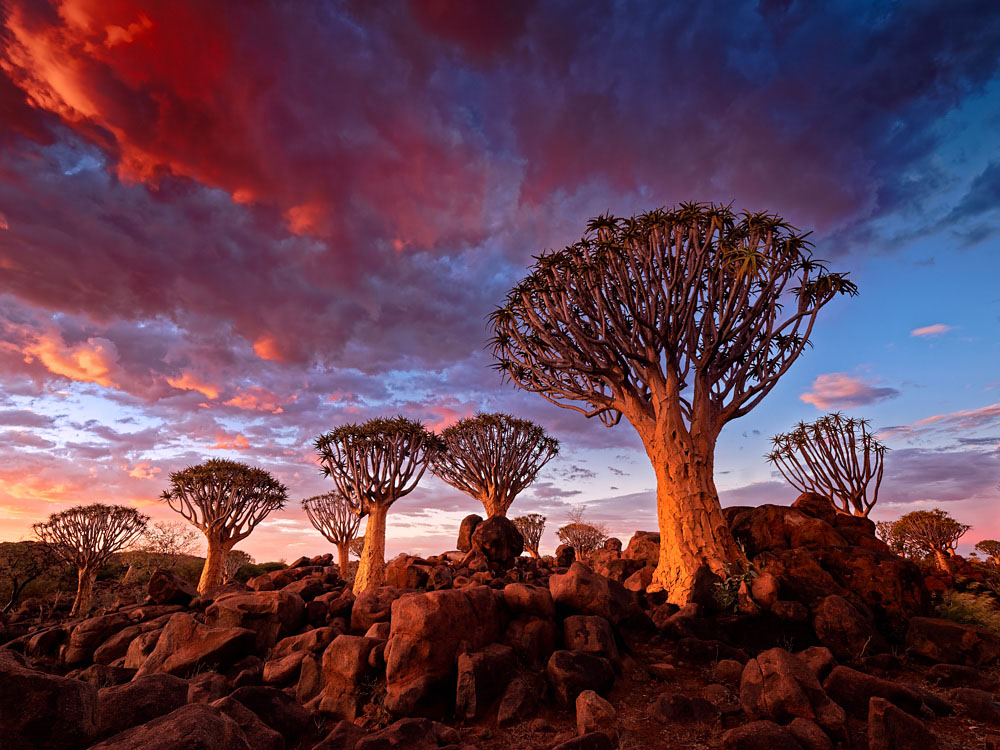
Namibia has been my obsession for the past few years. I have traveled to this photography mecca on three occasions and loved every moment of my time exploring both the wildlife-rich north of the country and the landscape rich south. This article will be a brief overview of where to go and how to shoot the highlights of southern Namibia with some ideas for how to get unique images of these well-photographed locations.
Any cursory landscape image search for ‘Namibia’ will throw up many images of the same few locations. Deadvlei with its silhouetted dead trees. Sossusvlei with its red sand dunes. Quiver trees standing before the milky way. One might reasonably ask: why should I travel half-way around the world to shoot locations that thousands of photographers have shot before and that I can see on my laptop screen with a few clicks? I would argue that even if you get images that are like those taken by the photographers who came before, they will at least be your images and will look great in your online portfolio or hanging on the wall of your home.
Quite apart from the photography, the things you will see and experience between the headline locations are well worth the trip for in their own right. The roads in southern Namibia are long and often rough but they traverse some of the most jaw-dropping arid landscapes you will ever see. You will not see many images of these landscapes online as they are typically passed through on the way to somewhere else, but they will delight your senses and enrich your Namibian experience.
A photographic tour of Namibia is not just about the photographs, it is also about the lovely people, the cultural experiences, the elegant lodges, the traces of the country’s colonial German architecture and the myriad outdoor activities that can be enjoyed like ballooning or quad biking or fishing.
It is accepted wisdom that anyone who goes to Africa gets its red dirt in their veins and simply must go back. If Namibia is your gateway drug to this astonishing and enormous continent you will be forever changed.
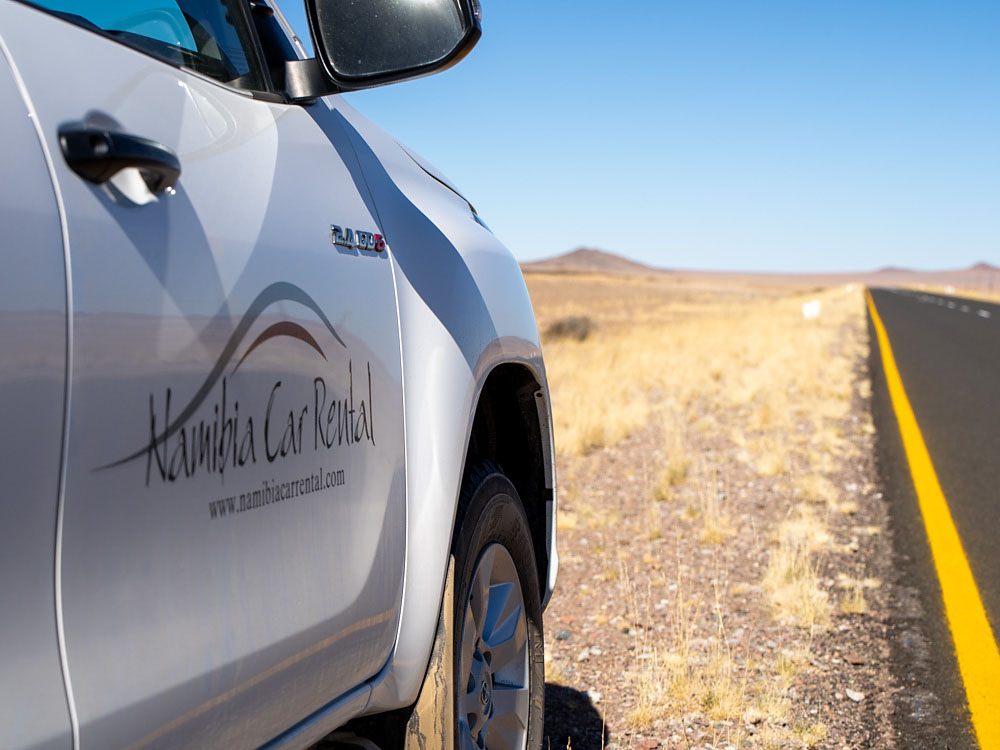
Getting Around
Firstly, let’s get a little myth out of the way. Many people are fearful of going to Africa because they think it might be dangerous. This fact is true only for certain countries (or parts of countries) within what is a simply huge continent. Namibia itself has the usual risks of any country (like theft and road accidents) but is mostly safe and easy to get around. You will not find it a difficult place to visit if you accept that some standards (like the roads for instance) may be different to what you are used to in your own country and take common-sense precautions.
I will at this point make a recommendation for Chameleon Holidays and Travel, a Windhoek based travel agent that I have dealt with for all three of my trips there. They were unfailingly reliable and helpful. The help of a local agent with on-the- ground experience cannot be over-estimated.
Advance bookings are critical. Namibia is becoming a very popular destination and lodges are booking out many months in advance. This is especially true for the most sought-after lodges like Sossus Dune lodge (which is the only lodge that is inside the national park at Sossusvlei). I booked my last trip twelve months in advance and even then, had to rearrange my itinerary to suit the limited vacancies at Sossus Dune Lodge.
It is not essential to hire a 4wd vehicle but many of the roads are very rough. The long-travel suspension and hardier tires of a four-wheel drive will make your trip much safer and more comfortable. I recommend getting a dual cab vehicle that has a long-range tank, 2 spare tires and a key-lockable canopy over the tray. This is a commonly available choice which can easily be upgraded to a fully equipped camping option for lower-cost travel.
When To Go
My last visit was in April and I had great skies. A previous visit in June I feel was a little too late in the year as it was quite cold at night and the skies were clear most of the time. For landscape photography I feel like March to May is a good time to go as you have the possibility that there is still greenery around after the early year rains and more chance of some cloudy skies. Drought is always a possibility in Namibia so there is no guarantee of any new green shoots. It is an arid, low rainfall country so there is no guarantee of dramatic cloudy skies either but the good thing about visiting Namibia is that there are photographic opportunities available even if the skies are dull – like night photography.
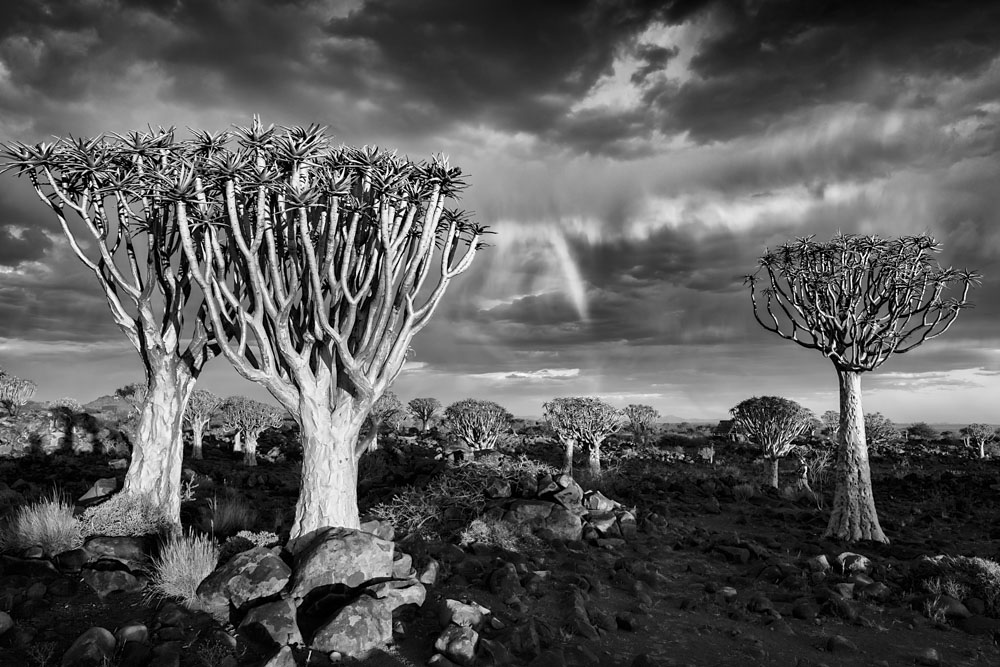
Photographic Equipment
Just take whatever flavor of camera you have (although if you don’t have a high megapixel body you will wish you did by the end of the trip). The usual landscape photography staple of an ultrawide angle lens such as a 16-35 and a normal zoom lens of 24-70/105 will suffice for most locations. A telephoto zoom like a 70-200 or 100-400 may prove useful but is not essential. If you wish to head north afterward and photograph the wildlife, then telephoto lenses of up to 600mm will be essential. If you like night photography, make sure your wide-angle is at least f2.8. A macro lens, or better yet a wide-angle macro could be useful if you want to search for insects and other small creatures amongst the dunes and rocks.
Most importantly make sure you have a back-up camera body as there is nowhere for repairs or replacement once you leave the capital of Windhoek. You should also consider taking a second tripod so that you can have two cameras running together when doing long exposures or if you want to try your hand at time-lapse photography. Drones are banned in some areas but there will still be many places to use a drone if you have one. I do not have any personal experience with drones so you should research this further before deciding to take one.
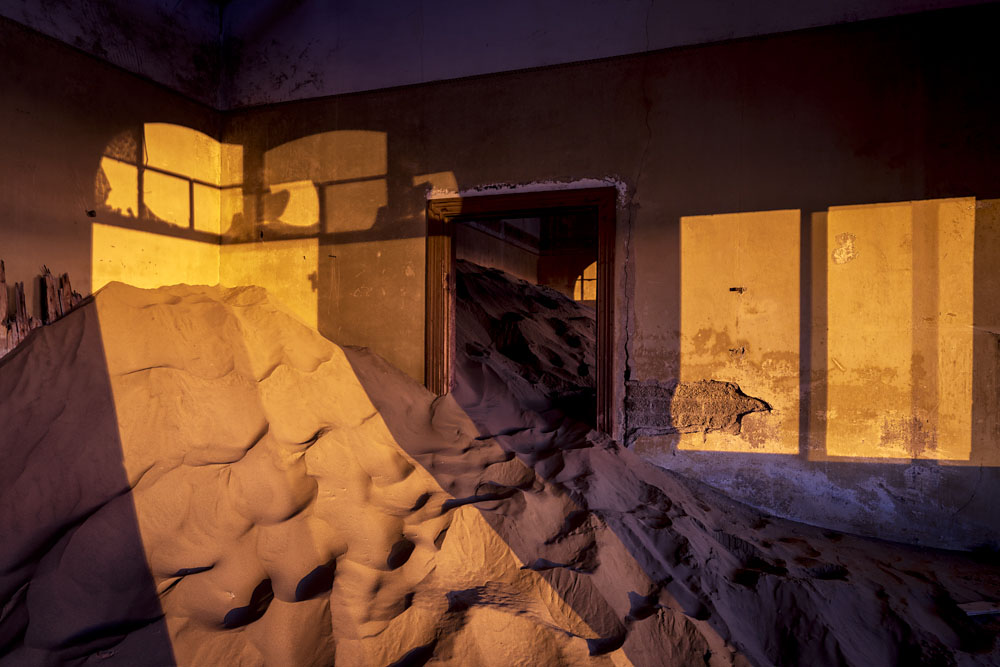
Quiver Tree Forest & Devils Playground
This location is about five hours drive from Windhoek on a relatively boring bitumen road. You will turn off towards the forest just before you get to Keetmanshoop. This dusty little town doesn’t have much to offer a tourist other than a small supermarket and a fuel station. The logical place to stay if you want to shoot the Quiver trees is the Quiver Tree Forest Rest Camp. Both locations are on a private working farm and the rest camp is run by the farm operation. There are options for camping, plus accommodation units that are not very nice but serviceable. It is only a few minutes drive from the forest itself (or a few minutes’ walk if you are camping), so the early starts are no problem.
You will need to pay a permit to enter both locations and you will need to purchase the night photography permit for sunrise and sunset access. I would suggest staying two nights to increase the chance of getting favorable light or weather conditions.
As a landscape location, it does at least have two possible outcomes. If the skies are interesting, you will get awesome dawn and dusk photos. If the skies are cloudless you may still get a nice pink glow because of Namibia’s dusty air but you can also then shoot the night sky and play around with some light painting of the trees. If night photography is important to you make sure you time your visit to suit the new moon.
The boulder field of the Devils Playground is interesting, but it is very challenging to find good compositions. The right conditions on the right day I’m sure would provide great opportunities. My own attempt did not yield any ‘keepers’ but I enjoyed the visit regardless.
Try shooting the weaver bird nests or even the weaver birds themselves if you have the lens for it. There are plenty of opportunities for images of details or abstracts and silhouettes. The lesser-known Devils playground has opportunities if you are up for the challenge. Like any location, there is always the chance of unique weather conditions if you are prepared and fortunate.
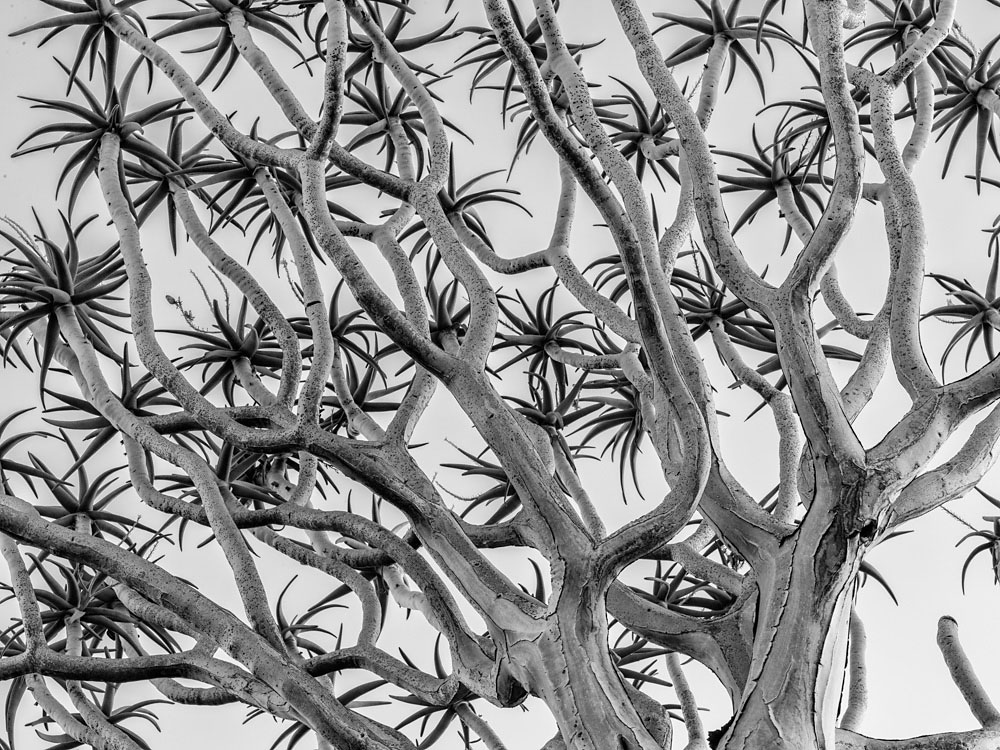
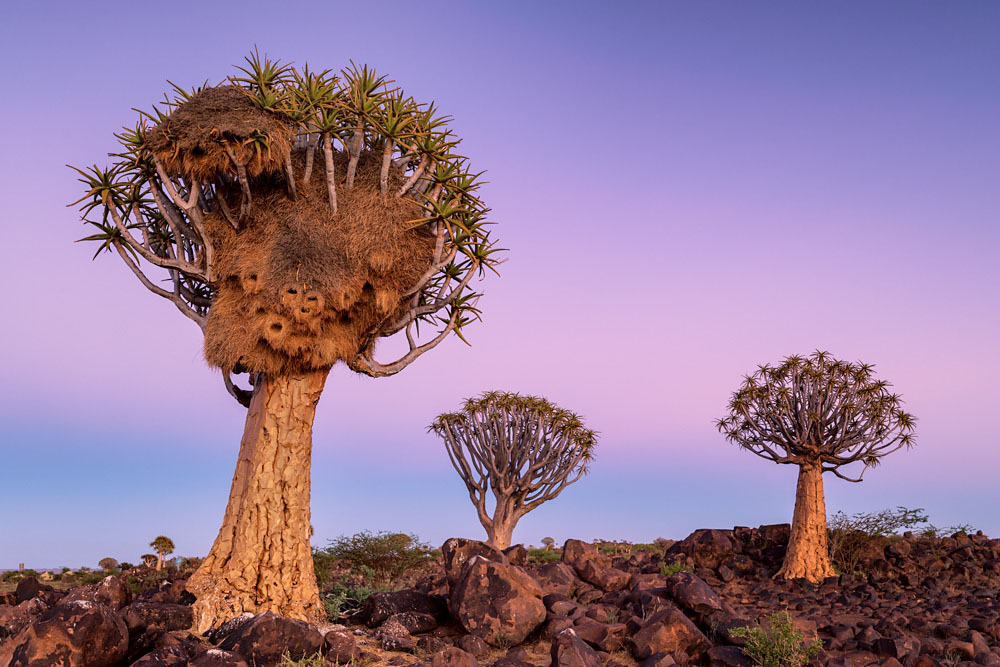
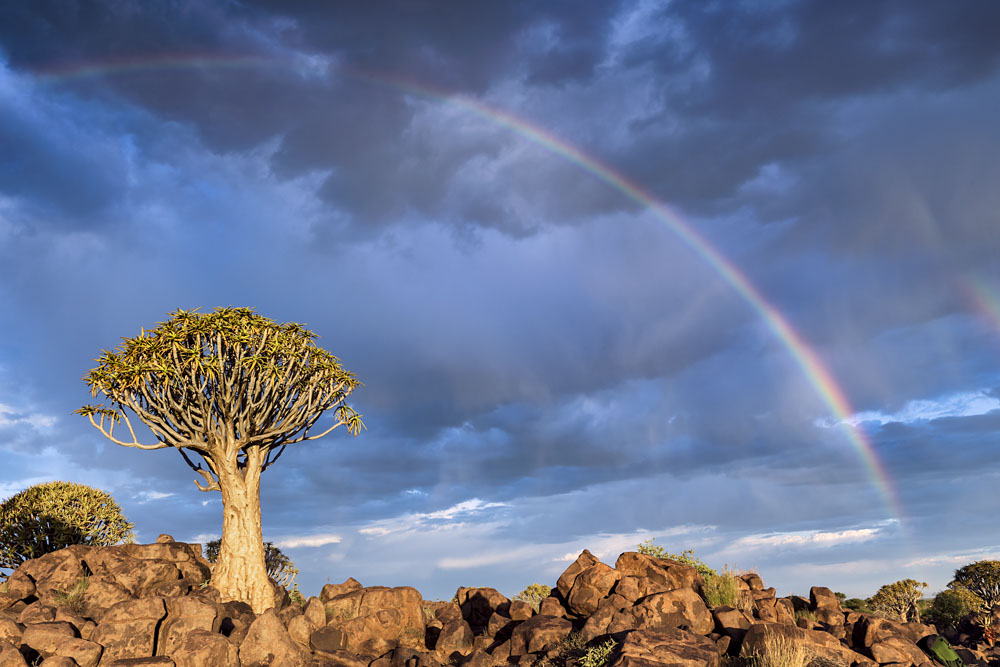
Kolmanskop Ghost Town
This location is only about ten minutes’ drive from the small coastal town of Lüderitz. The ghost town itself is open every day for tours but you will need to pre-purchase a photography permit so that you can gain access outside normal visiting hours (ie sunrise and sunset).
My biggest piece of advice for shooting this town is to allow two days (four sessions) to give yourself time to shoot both the interiors and exteriors. Before coming here, my research online turned up images mostly of building interiors. While the interiors are undoubtedly the headline act, the exteriors can also provide great photographic opportunities. There are a lot of buildings so it will take some time to explore them all.
I have a note of caution about this location. I am pretty sure that there are asbestos roofing materials on some of the buildings, so you enter this site at your own risk. If you are concerned, it might be a good idea to take a face mask, especially if the weather happens to be windy.
The building exteriors are very much under-utilized for photography in my opinion and a much richer source of unique photos. Take the time to explore the elegant old homes higher up the hill – especially if you get some nice skies to complement them. Lüderitz also has other photo opportunities at the Shark Island Lighthouse (though it can be incredibly windy). There is even a small lake that may have flamingos and the surrounding landscape is fascinating.
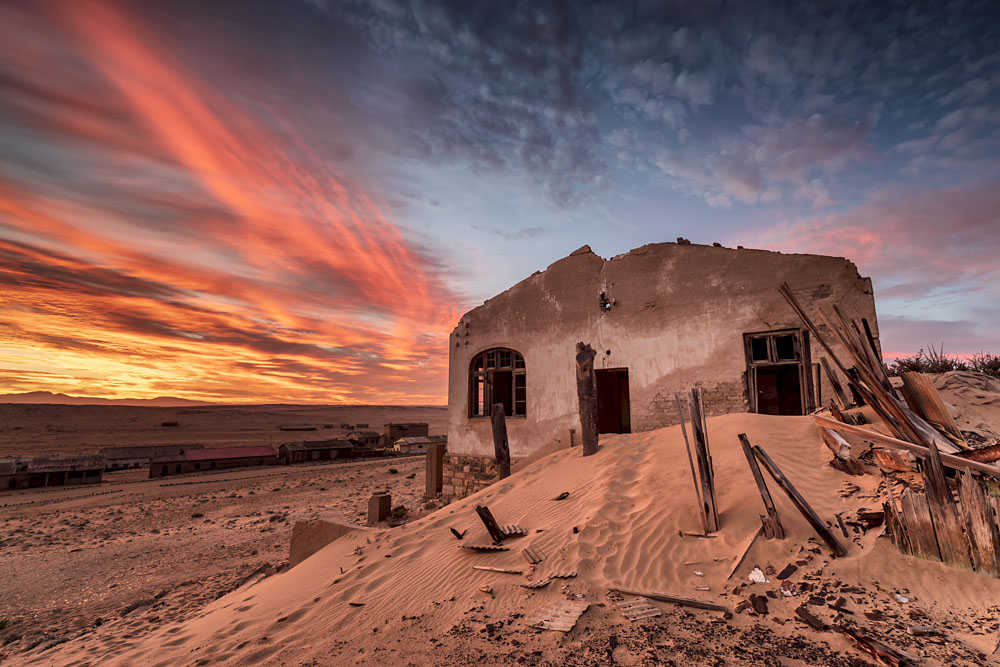
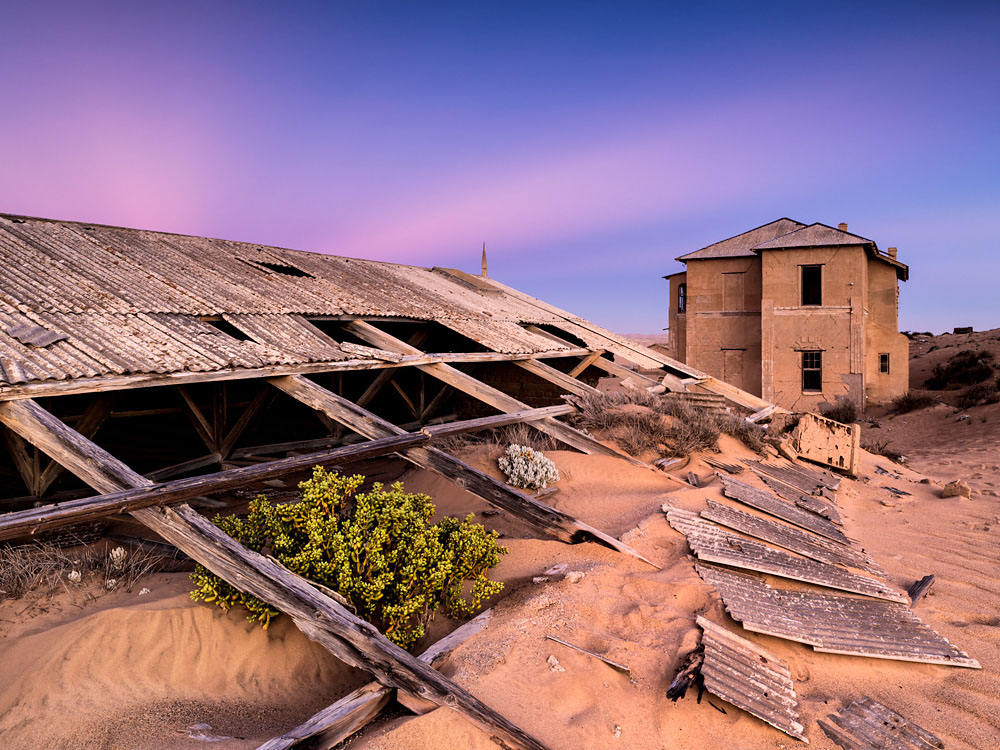
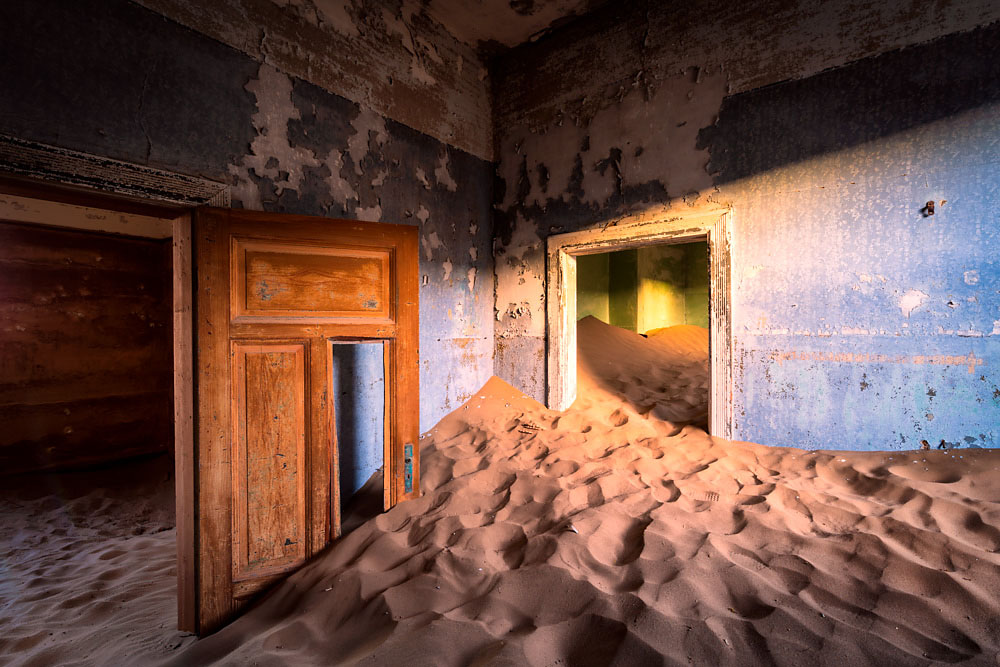
Sossusvlei and Deadvlei
Probably the most iconic location in Namibia (at least for landscape photographers) is Deadvlei, a dried-out clay pan with dead trees standing sentinel across it. The red sand dunes of the Namib Desert that surround it (the local area being called Sossusvlei) are equally as stunning. Any trip to southern Namibia surely must include this location though it is of course extremely well photographed and difficult to get unique images of. I believe the surrounding areas and the dunes that are visible beside Dune Drive are full of opportunities though.
If you want to do this location justice with your camera you really have to stay at Sossus Dune Lodge (or Sesriem Camp if you are camping). Sossus Dune Lodge is the ONLY lodge that is within the border of the park. If you lodge outside the park you won’t be allowed through the gates until sunrise – along with a steady stream of smartphone tourists. I believe if you are at Sesriem Camp you can enter the park an hour before sunrise. Staying at Sossus Dune Lodge I was able to leave the lodge even earlier which gives plenty of time to get to location in time for great light. You need all the extra time you can get as the drive-in is speed restricted (I think to minimize the risk of hitting animals) and will take about forty-five minutes to get to the main 2WD drive car park (if you are going all the way to Deadvlei). Then there is a short section that is 4WD access only which you can do yourself if you have a 4WD rental otherwise you will have to wait for the lodge vehicles to catch up and hitch a ride. Then you will need to walk through the dunes before you finally arrive at Deadvlei.
This walk isn’t signposted well (or at all really). There are usually plenty of footprints to guide you, but I advise having google offline maps preloaded for reassurance.
Morning is the best time to shoot Deadvlei as you will likely have the place to yourself, at least initially, and the way the light hits the west Dune is amazing. Stick to the surrounding dune areas for the evening shoots where you can avoid the smartphone crowds and hunt down compositions at your leisure.
Try shooting some ICM (intentional camera movement) images at times when the light is not ideal. The trees of Deadvlei or the dunes will make great subjects for this. Try a tilt-shift lens if you have one to get interesting shallow focus effects. Make sure you allow extra time to photograph the dunes – you can stop anywhere along Dune Drive and shoot the interesting shapes and contours of the dunes. Experiment with monochrome conversions which work well with the high contrast shapes you will get later in the morning. Try doing time-lapse photography showing the light and shade passing across the dunes or the clay pan. If you have a telephoto lens with you, keep your eyes open for opportunities to shoot the photogenic Oryx antelopes. Book a helicopter flight to shoot the dunes from the air.

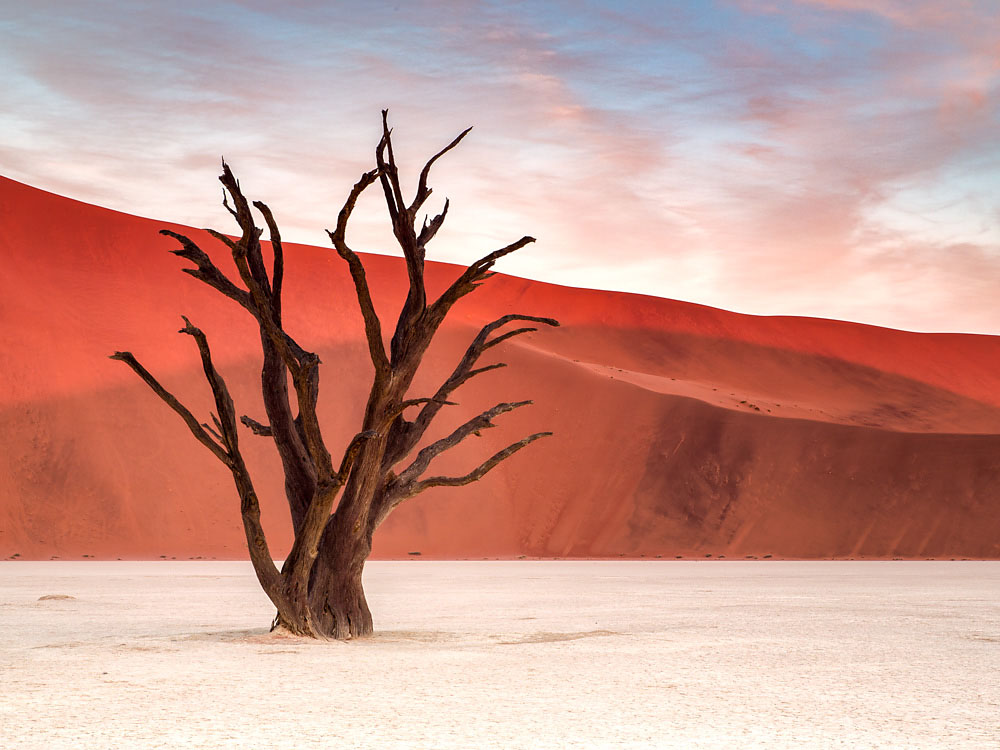
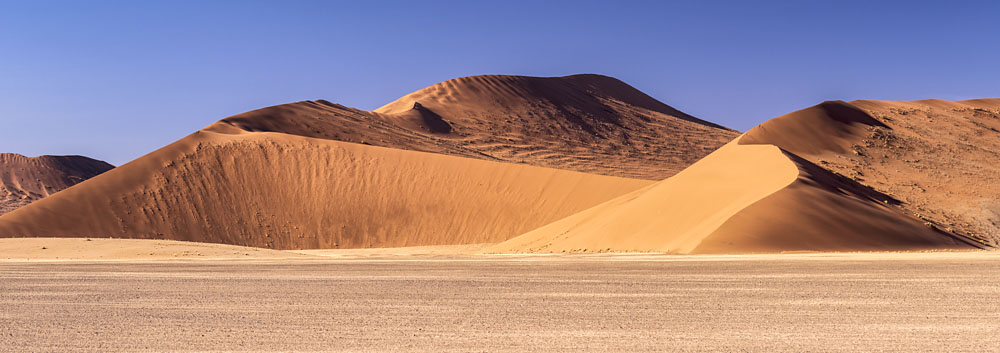
On the Road
On the way to Lüderitz you will see a signposted location where the famous desert horses congregate. There is a watering hole and feeding station and the horses, though wild, are habituated to humans. Treat them with respect and don’t try and pet them. This makes a great place to stop for a break. There are also occasional opportunities to shoot some livestock or farm scenes at various places.
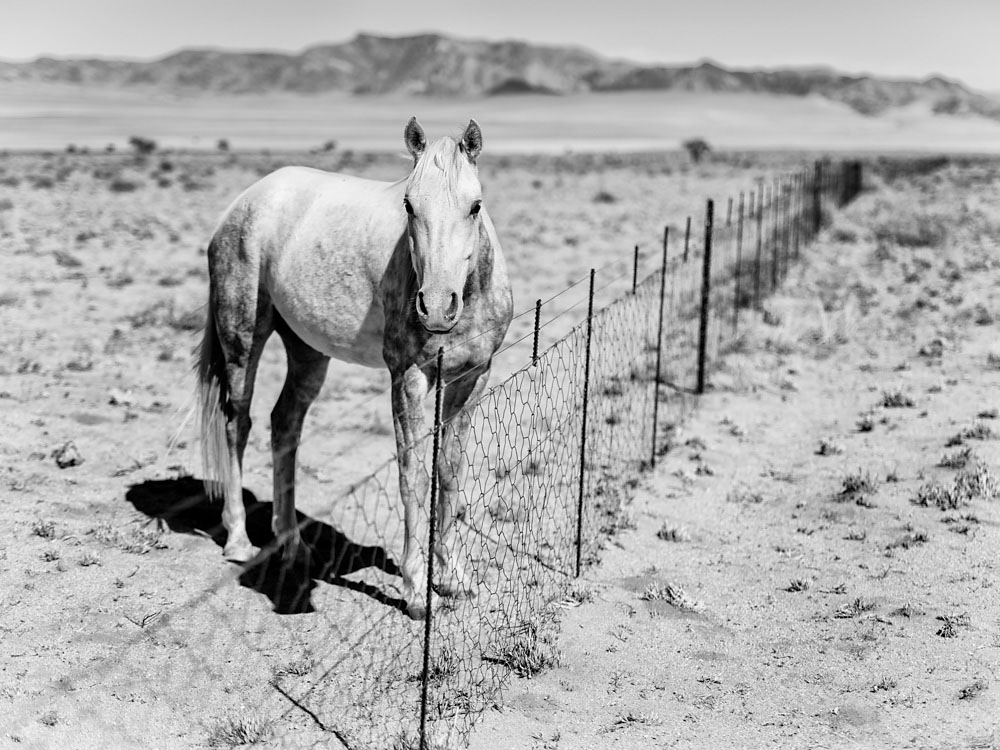
The roadside scenery really is astonishing in places. Because you will be passing through them at times other than dawn and dusk it is hard to shoot them in the same way. If you allow plenty of time for your drive, you will be tempted many times to get out of the car to shoot something.
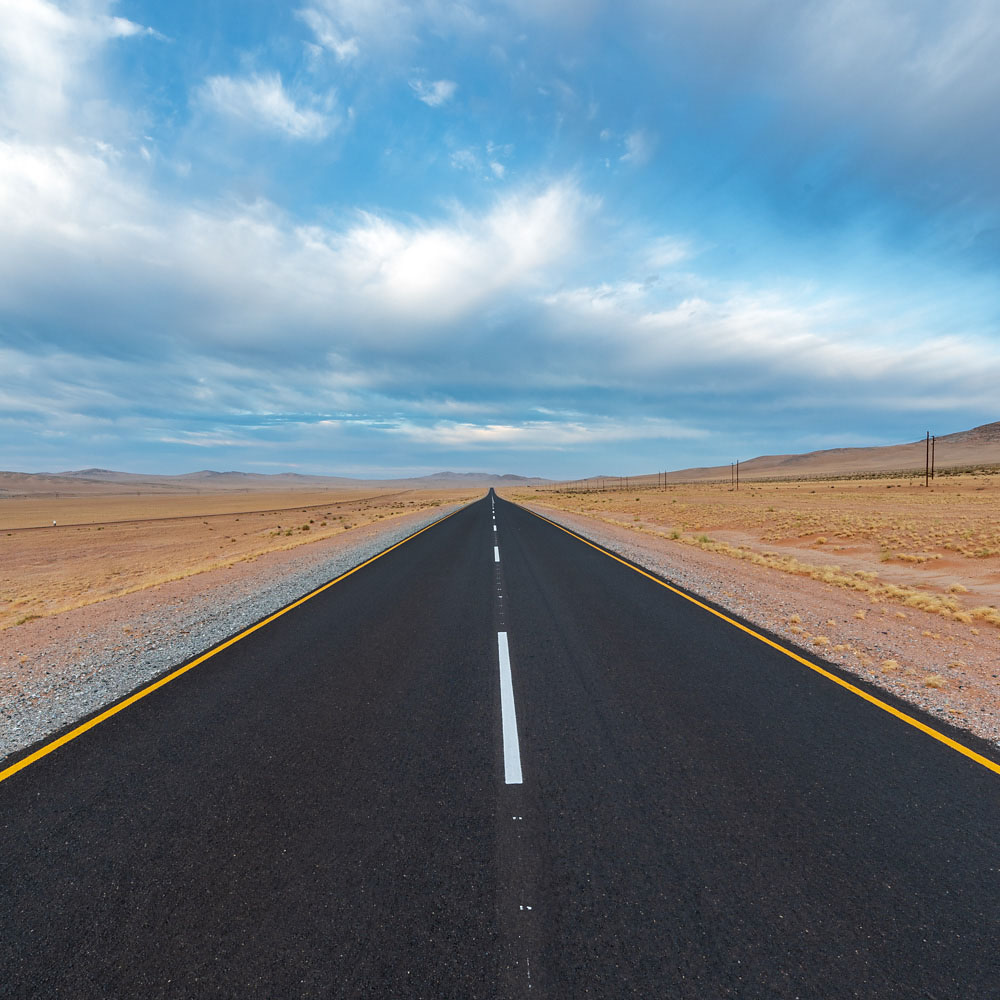
Driving between Kolmanskop and Luderitz you will pass the old Garub Railway building. It makes a great place to flex your legs and get some interesting images. Even shot in midday sun there is fodder here for your creative talents.
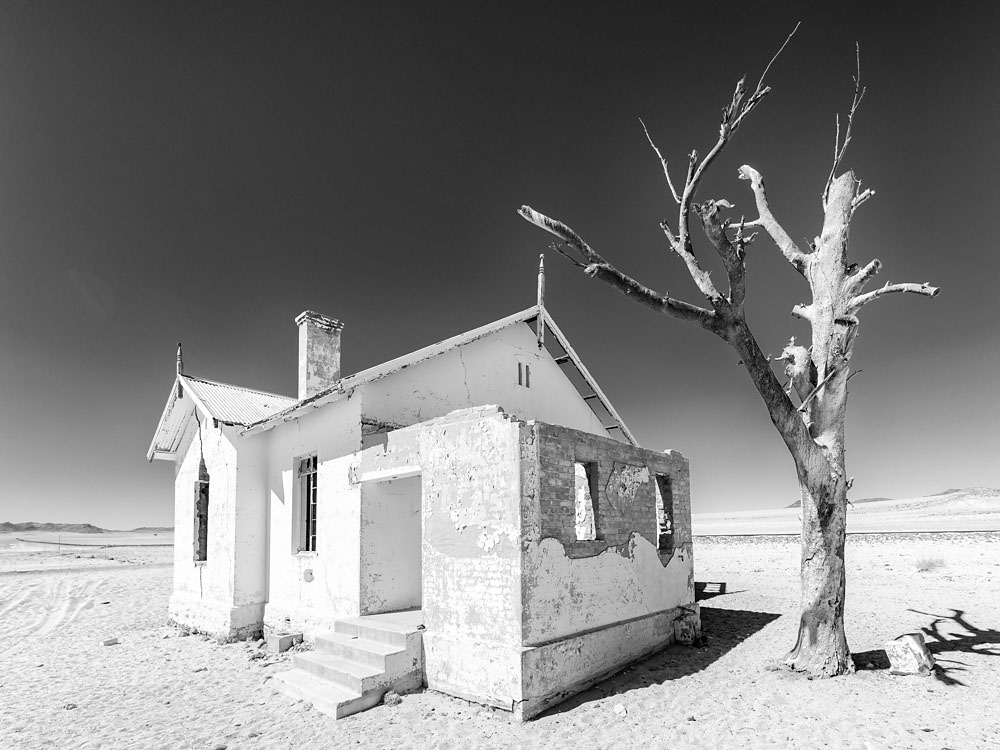
North of Swakopmund there is another rest point where you can photograph the rusting hulk of the Zeila at Henties Bay. There are many shipwrecks on the skeleton coast, but this is the only one that is easily accessible.
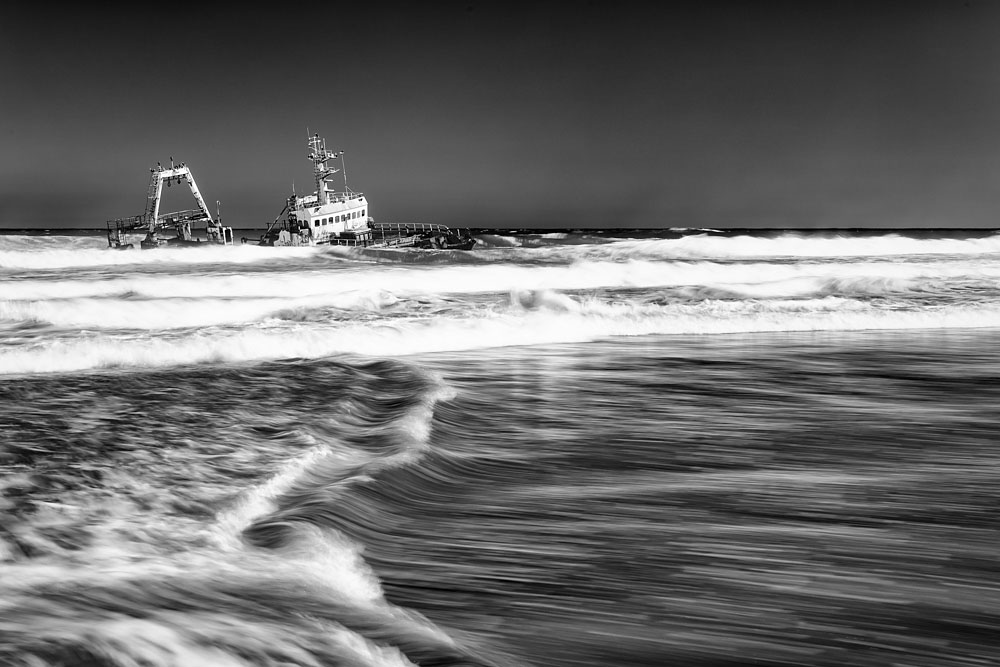
Look for leading lines in the expansive landscapes in the form of fences or the roads themselves. Try shooting panoramas if you are fortunate enough to have a nice sky or good light. There are lodges scattered throughout southern Namibia away from the usual photography hotspots that will offer early morning access to some of these unique landscapes if you have extra time and want to explore locations off the beaten track.
Moon Landscape & Swakopmund Dunes
One of the most extraordinary landscapes in a country full of extraordinary landscapes is the Moon Landscape area near the prosperous and booming coastal city of Swakopmund. I visited this place just once to see what it was like. I did not have a great deal of success as I was unprepared and had little time to find a location. It was difficult to find a point of interest and a point of scale. There are higher vantage points to view the area from close to the road or you can walk down into the landscape. Just don’t get lost as there are not many distinctive landmarks amongst the field of little ridges and gullies.
Swakopmund itself is surrounded by sand dunes that will be rich in photographic opportunities if you have the time. I personally did not shoot them because to me they looked like dunes I have at home not far from where I live, but they are impressive and easy to access. Desert Breeze Lodge on the outskirts of Swakopmund overlooks the dunes and maybe a good place to access them at dawn.
The Moon Landscape might make a fascinating location for drone photography. The little gullies and flash flood riverbeds would probably reveal themselves in wonderful patterns if viewed from above. Otherwise, accepting the challenge of finding a conventional ground-level composition at this location could reward you with unique Namibia images of a lesser known place. The Swakopmund dunes would reward exploration and local guided tours that will help you find some of the deserts smaller inhabitants would reward those who like little critter or macro photography.
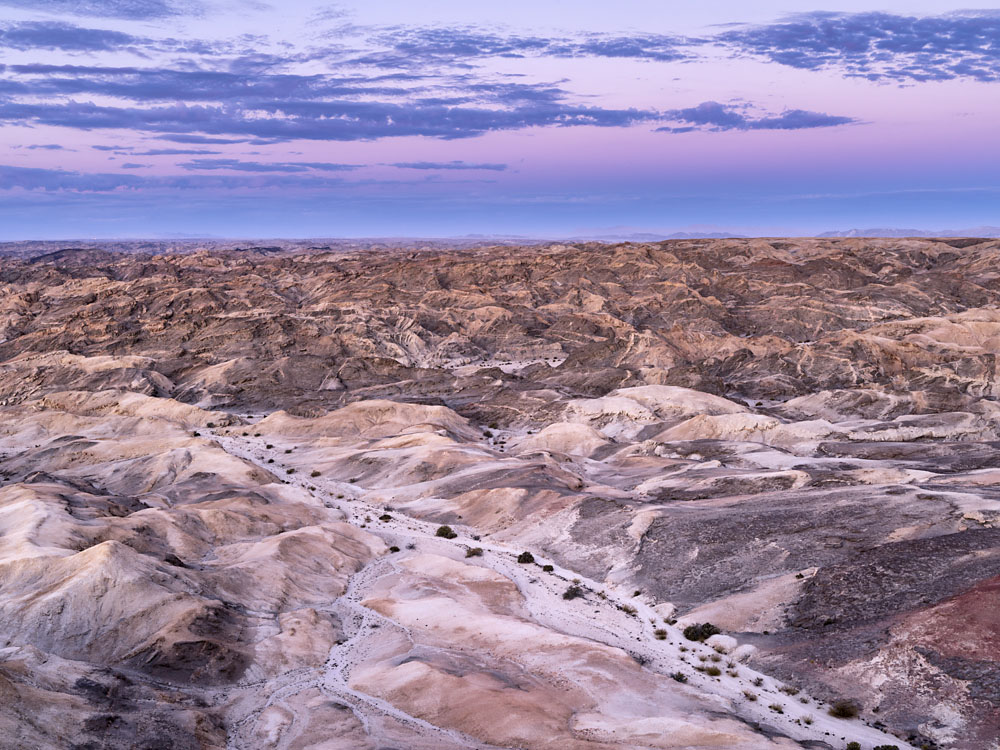
Spitzkoppe
This location is about three hours’ drive west of Windhoek. It is certainly not as well known or as busy as Deadvlei but is nevertheless a great photography location. The rock arch is like a magnet for landscape photographers, but it is honestly not as easy or as fulfilling to shoot as you might think because the composition options are limited, and you really need a great sky to set the arch against. The main peak itself is impressive and can be shot from different locations with different foregrounds.
The perfect place to stay, if you are not going to camp, is the new Spitzkoppen Lodge, a beautiful tented lodge nestled behind the main peak amongst the boulders. If you are going to camp it is possible to stay at one of two sites right next to the arch location and within sight of the main peak.
If you have a telephoto lens you will want to shoot the cute Rock Hyraxes that are plentiful amongst the rocks and around the lodge. Look out for birds and insects, especially if you are visiting after rains when the huge bush crickets may be out and about. Everyone shoots the rock arch but there are other images to be found in the surrounding granite outcrops, especially if you have favourable skies. If you join a tour you can get a chance to see and photograph ancient bushman rock art. Night photography of either the arch or the peak is well worth a shot if you have cloudless skies.
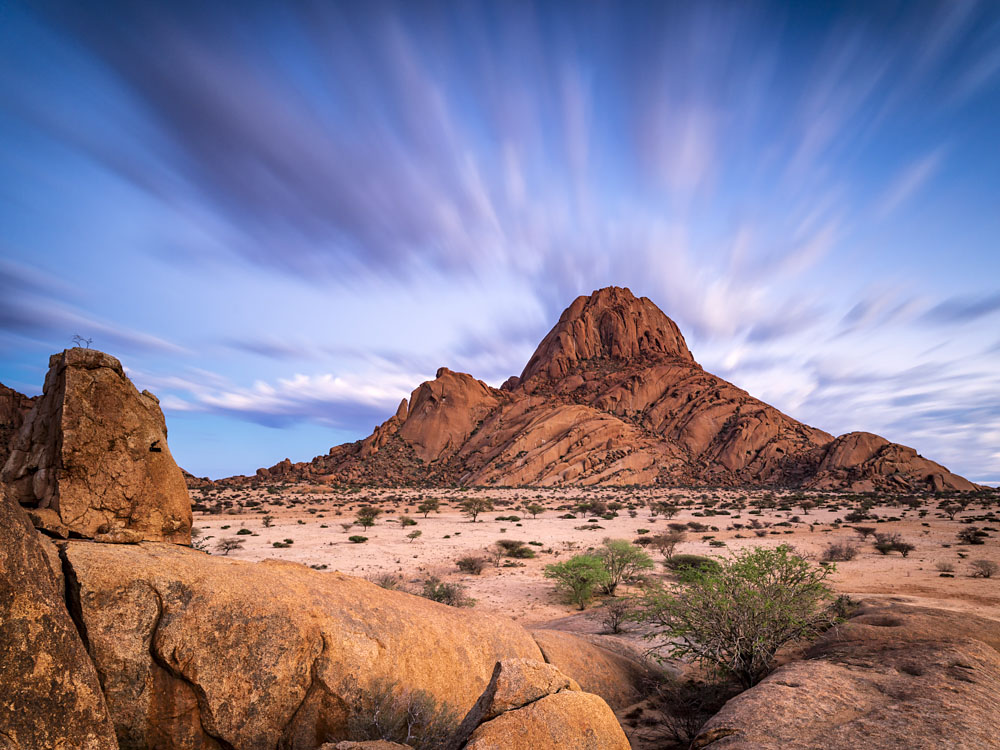
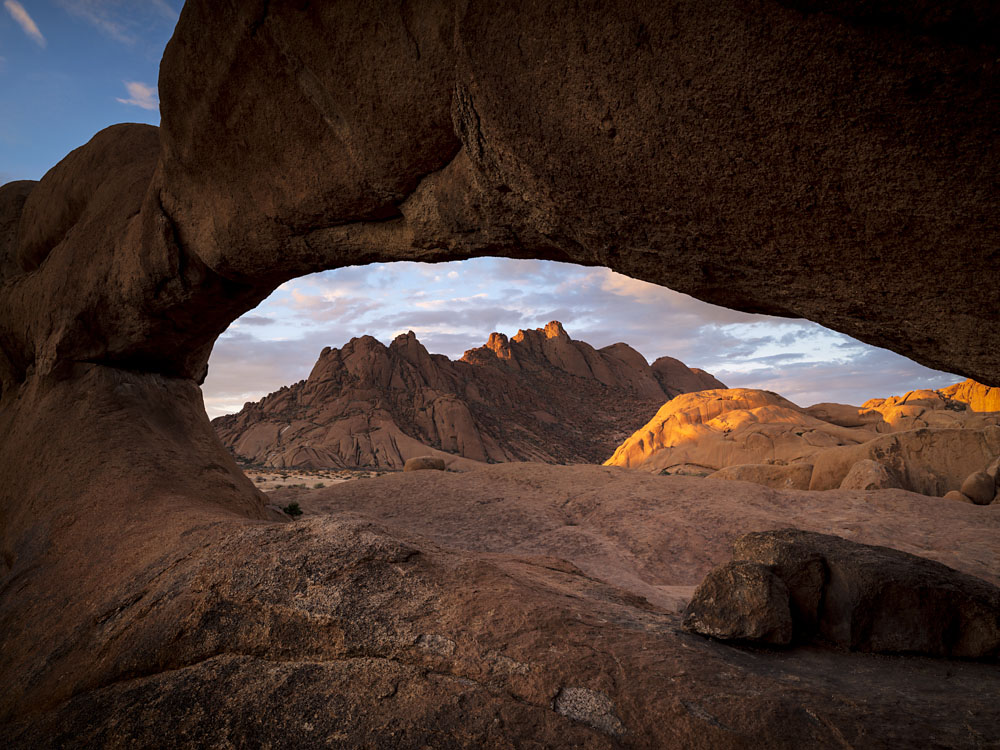
In Conclusion
If the continent of Africa has been beckoning to you, I would implore you to start with Namibia. It is affordable, easy to self- drive and has an incredibly diverse range of photographic opportunities. It also makes a superb starting point for self-drive tours that lead into Botswana, South Africa, Zambia and Zimbabwe. Don’t be afraid of taking the same shot that everyone else has. Get that shot then exercise your creative muscles to find something new. Whatever happens and however ‘successful’ your images are, I guarantee you will not regret your visit to this remarkable country.
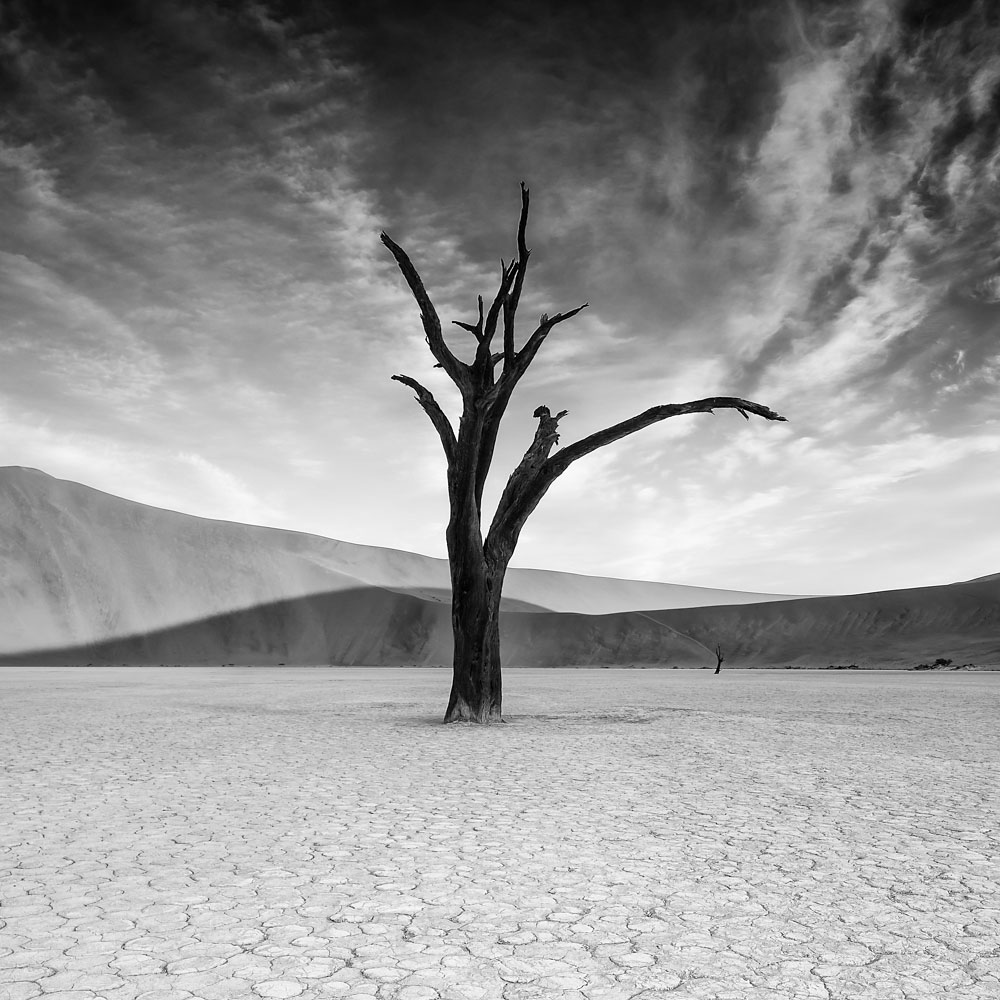
www.mordenohare.com.au
Morden O’Hare
September 2019
Mandurah, WA
Morden is an amateur photographer with a passion for wildlife, travel and landscape photography. He has focused mainly on landscape photography in Australia and both landscape and wildlife photography on trips to Botswana, Kenya and Namibia. He enjoys writing about his experiences for his blog and has produced an eBook on African wildlife photography. With a lifelong interest in Africa he is particularly invested in the images he has made there, especially in the knowledge that the awareness and emotion that can be portrayed in photographs can play a small part in encouraging the preservation of Africa’s last remaining wild places and animals. He lives in the South West region of Western Australia and makes a living in the building design profession, doing photography when he finds the time.






